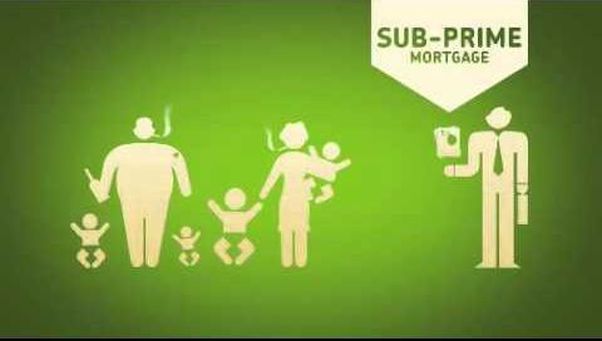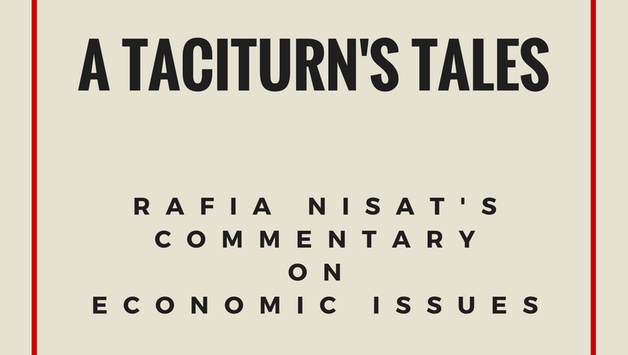ECONOMICS STUDY CENTER, UNIVERSITY OF DHAKA
|
Rafia Nishat The financial crisis or the credit crisis that initiated in the U.S in 2007 and subsequently hit the rest of the world is by far the most enthralling economic tale I have come across. Although devastating in its own nature and consequences, a global event of such catastrophic scale is indeed mind blowing as we delve into studying its complicated dynamics. What are the words that we normally see if we google about this? Sub Prime Mortgages? Housing Price Bubble? Collateralized debt obligations? Credit default swaps? These are indeed seemingly difficult terms with even more difficult meanings and astounding applications. Thus keeping this tale concise and basic is probably going to be difficult but it’s worth a try. Recession hit the U.S economy in 2007 and with the U.S being one of the largest economies in the world, the impacts spread worldwide.  Now, obviously the seeds were sown long before the crisis hit like back in 2001 when Federal Reserve lowered its interest rates to 1.75% to keep recession away. This made borrowing very cheap which meant easy money for everybody. Bankers, borrowers and everyone within the financial system became fanatic with leverage. In June 2003, Alan Greenspan, the then Chairman of the Federal Reserve lowered the interest rate to 1% which was the lowest in 45 years. While banks and other financial institutions were ecstatic, investors weren’t too happy. Such low interest rates meant low returns for them. They no longer saw it profitable to invest in treasury bills and bonds and were looking for other sectors to invest in. This is where things started to get interesting. With housing prices on the rise and abundance of cheap credit, all eyes shifted to the housing market. Families looking to buy a house would borrow mortgages(a loan that allows a buyer to buy real estate property while the ownership of the property remains with the lender until the full amount plus interest is repaid). But lenders would sell these mortgages to others and pass on the debt. Institutions like investment banks would buy thousands of mortgages and pile them up together to create a Collateralized Debt Obligation (CDO). CDOs are stacks of asset backed securities that are often in the form of a mixture of mortgages and other debts and can be cut into three sectionsbased on their risk, which is the expectation of the debts being repaid. The safest of the tranches were rated as AAA by the rating agencies and bore a stable rate of return. The next tranche was rated BBB and had a higher rate of return than the first tranche. The last tranche was the riskiest security bearing the highest rate of return and were not rated at all. The top and safest tranches were also ensured by credit default swaps. Credit default swaps are typically a consensus that allows the buyer/ lender of a reference loan to be compensated by the seller in case of loan defaults. Consequently the top sections of the CDOs were considered the safest investment and investors would buy them. The risky sections were bought by hedge funds and other risk takers. The pile of mortgages just became the pillow in a game of pillow passing between professionals where the pillow was the burden of the one who held it. Now, mortgage loans were obviously given to home owners with good credit i.e. the ones with stable income. So investments on these debts brought great returns. Investors demanded more mortgage backed securities and CDOs. To keep up with these rising demands lenders started the practice of making loans to people with low or unstable incomes who were generally unqualified for standard mortgages. These loans were called sub-prime mortgages. The low interest rates joined by the new liberal lending requisites drove up the demand and thus the prices of houses in the US market ascended. Investors continued pouring in their money as higher prices made these appear to be better investments. Even if home owners defaulted, investors would gain the house and they could re-sell it at a high price. It was indeed a phenomenal camouflage creating an illusion of profit. The economy entered a housing price bubble which would only burst to show a bitter reality. Home owners soon failed to keep up with their payments and defaulted. More and more houses came back to the market with no available buyers. The excess supply of houses sank the prices. Many debtors stopped paying as they saw no point in paying more than the house was worth. More and more defaults just resulted inlarger decline in prices. Investors continued losing money and refused to buy these loans. Lenders of subprime mortgages got tangled in bad loans and many went bankrupt. This is where credit default swaps come back in the picture. The sellers of such insurances such as AIG in many cases had sold them with no regards to availability of credit to back them up. The mayhem of increasing defaults hit them hard and they became unable to make compensations to their buyers. The CDOs of investment banks became stacks of invaluable houses with no inflow of cash. Lenders, borrowers, investors i.e. everyone was at a loss. Investment banks like the Lehman brothers declared bankruptcy while many institutions required the government to bail them out. Credits froze and the entire U.S financial system collapsed. Recession hit the U.S economy and with the U.S being one of the largest economies in the world, the impacts spread worldwide. Let’s conclude by quoting Cathryn Louis. “Greed, in the end, fails even the greedy.”
1 Comment
|
Send your articles to: |


